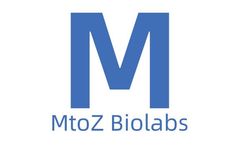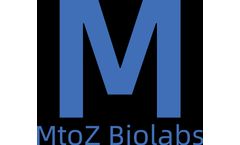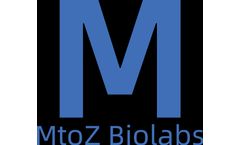Drug Transporter Interactions Articles & Analysis: Older
34 articles found
Pharmacokinetics (PK) and pharmacodynamics (PD) are two fundamental pillars in the field of pharmacology and drug development. Understanding their intricate interplay is essential for determining the efficacy and safety of therapeutic compounds. When studied in living organisms, this relationship is referred to as in vivo PK/PD, a discipline that provides invaluable insights into drug behavior ...
Antibody drugs are a type of drugs that treat diseases through artificially synthesized antibodies, which bind specifically to target molecules for therapeutic purposes. Common types of antibody drugs include monoclonal antibodies, artificially synthesized antibody fragments, immunotoxins, and antibody-drug conjugates, etc. Antibody drugs have shown significant therapeutic effects in the ...
FcRn is widely involved in various biological and immune processes in the body, playing roles in immune protection, maintaining the stability of IgG, transmembrane transport, and mother-infant transmission. Utilizing these characteristics of FcRn can help optimize the design of recombinant protein drugs, improving the stability, durability, efficacy, and safety ...
The scientific realm behind the development and evaluation of therapeutic drugs, pesticides, industrial and environmental chemicals profoundly relies on a field of research called Pharmacokinetic/Toxicokinetic (PK/TK) studies. These investigations provide substantial information on how an organism affects a substance, delineating vital zones of absorption, distribution, metabolism, and excretion. ...
In recent years, the field of biotechnology has seen groundbreaking advancements, with the integration of artificial intelligence (AI) into gene editing and therapy. AI-driven technologies have transformed the way we approach genetic modification and treatment, offering unprecedented opportunities for precision medicine and therapeutic interventions. One of the most significant applications of ...
At the same time, with high-throughput sequencing technology, protein interaction relationships can be explored at the whole genome level.ApplicationsPPI-Seq is instrumental in elucidating various biological processes within cells, such as signal transduction, gene regulation, and material transport. ...
In recent years, the field of biotechnology has seen groundbreaking advancements, with the integration of artificial intelligence (AI) into gene editing and therapy. AI-driven technologies have transformed the way we approach genetic modification and treatment, offering unprecedented opportunities for precision medicine and therapeutic interventions. One of the most significant applications of ...
In the vast realm of drug discovery, the fusion of computational prowess and intricate molecular details has given birth to the revolutionary field of protein-small molecule docking. This innovative computational method delves deep into the complex molecular interactions between proteins and small molecules, paving the way for breakthrough advancements in therapeutic approaches and the era of ...
Drug development is a complex and multifaceted process that involves extensive research and testing to ensure safety, efficacy and quality for human use. One critical element in the drug development process is drug metabolism and pharmacokinetics (DMPK), which refers to how a drug is absorbed, distributed, metabolized, and excreted (ADME) from the body. In vitro DMPK services, along with ...
Introduction In the world of molecular interactions, understanding the forces that drive binding events is crucial for advancing scientific research and developing new therapies. One powerful technique that has revolutionized the study of molecular interactions is Microscale Thermophoresis (MST). In this blog post, we will delve into the world of microscale thermophoresis, exploring its ...
For a long time, the research and development of each new drug has faced the challenges of high cost and long cycle. In response to these challenges, major pharmaceutical companies have shifted from targeting common diseases to developing drugs for specific diseases. At the same time, these companies are constantly looking for new technologies for new drug development, such as high-throughput ...
Hepatocytes are the chief functional cells of the liver, responsible for the selective uptake, metabolism and excretion of most drugs. Cells for use in plate cultures or suspension assays represent a key tool for predicting properties such as hepatotoxicity, metabolism, and potential drug-drug interactions. Since these cells mimic the properties of the liver, researchers can evaluate the ...
Imagine tiny spheres, smaller than a red blood cell, glowing as they navigate the labyrinthine corridors of the human body. These aren't fireflies, they're fluorescent liposomes, a cutting-edge tool in the world of drug delivery and biomedical research. What are liposomes? Liposomes are microscopic bubbles made from phospholipids, the same fatty molecules that make up cell membranes. These ...
Drug development is a complex and multifaceted process that involves extensive research and testing to ensure safety, efficacy and quality for human use. One critical element in the drug development process is drug metabolism and pharmacokinetics (DMPK), which refers to how a drug is absorbed, distributed, metabolized, and excreted (ADME) from the body. In vitro DMPK services, along with ...
Transdermal drug delivery systems have gained considerable importance in the pharmaceutical industry due to their convenience, effectiveness, and ease of use. These systems rely on various excipients, which are inactive substances that aid in the delivery and absorption of active drug compounds through the skin. In this article, we will discuss eight important excipients commonly used in ...
In the realm of modern medicine, the quest for new and effective drugs to combat various diseases is a continuous journey. Drug discovery, the process of identifying compounds that can potentially treat diseases, has seen a significant transformation in recent years, thanks to advancements in computational biology and artificial intelligence (AI). In this article, we will delve into the ...
In the dynamic realm of drug discovery, the pursuit of innovative and effective treatments for diverse diseases demands groundbreaking approaches that can expedite the drug development lifecycle. Amidst these endeavors, Computer-Aided Drug Design (CADD) has emerged as a transformative methodology, harnessing the power of computational tools and simulations to predict, understand, and optimize the ...
Pharmaceutical formulations consist of active pharmaceutical ingredients (APIs) and excipients. Appropriate excipient selection is critical to the final quality of pharmaceutical products. When designing pharmaceutical preparations, the choice of excipients should not only consider the dosage form factors and excipient functions but also the interaction and compatibility between APIs and ...
In the world of pharmaceuticals, developing safe and effective drugs is a complex and time-consuming process. Before a new drug candidate can progress to clinical trials and ultimately reach the market, it needs to undergo rigorous testing in various model systems to assess its efficacy and safety. One critical component of this evaluation is the use of preclinical animal models. Preclinical ...
Molecular dynamics simulation is a powerful and widely employed computational method that investigates the motion and interactions of molecules under different conditions, revealing the structure, dynamics, and physical-chemical properties of molecules. This article aims to delve into the fundamental principles, applications, and key techniques of molecular dynamics simulation, providing you with ...










